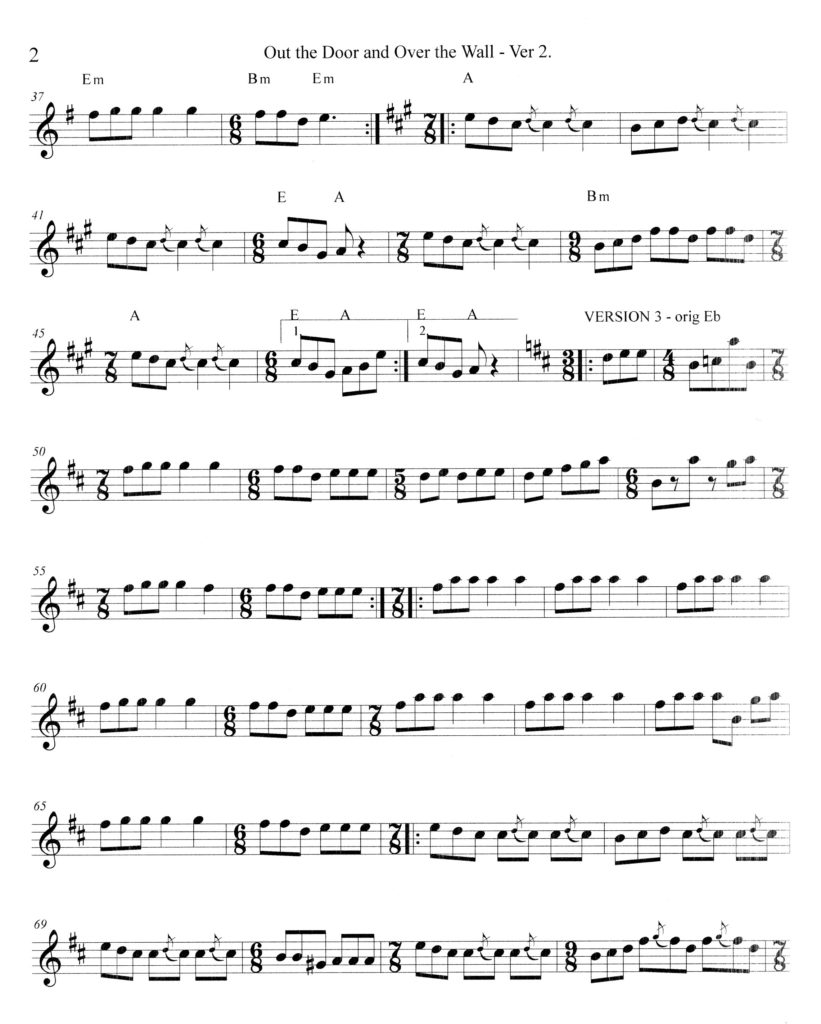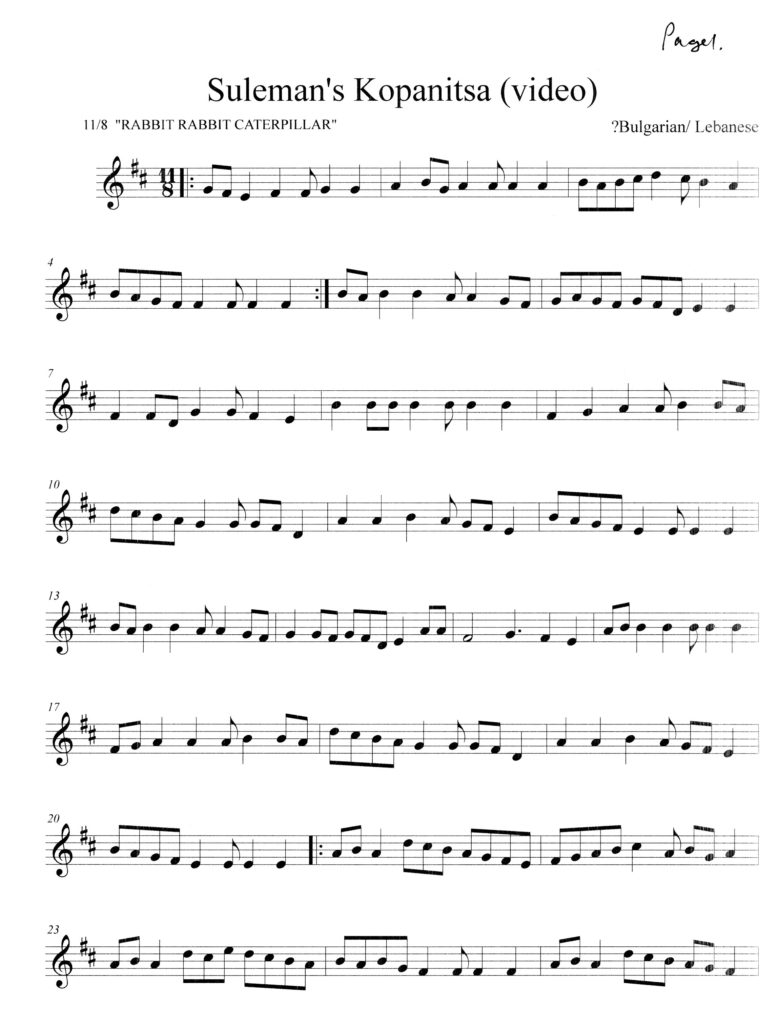I believe it was Jelly Roll Morton who first coined the phrase “the Spanish Tinge” to describe the Cuban and Caribbean influences in early New Orleans jazz. It didn’t stop there. All through the last century “The Spanish Tinge” has been in Jazz in spades. Duke Ellington made full use of it in a number of classic compositions including Juan Tizol’s masterpiece Caravan. Dizzy Gillespie, along with the Cuban Conga player Chano Pozo used the “Spanish Tinge” to virtually invent a whole genre of jazz called Afro-Cuban Jazz. His tunes Tin Tin Deo, Manteca and A Night in Tunisia are staple tunes in the Jazz repertoire. Cuban and Porto Rican musicians invented Salsa and Latin Jazz and that has gone onto to infiltrate and influence the rock music of Carlos Santana. Even Mexican Mariachi now and again pops up as an ingredient in pop and rock music. “The Spanish Tinge” has even filtered back to the black continent to become a major influence in West African music.
“The Spanish Tinge” crops up every where except possibly in Celtic music. Because there are no cultural connections between the Caribbean and Ireland it is no surprise that “The Spanish Tinge” is largely absent from Irish music. However, a case could be made for a Spanish influence in Galician Celtic music. Galicia is a province of Spain so that is probably a special case. All of this does not mean to say that Celtic musicians are immune to outside influences. It is just that they have looked in different directions. They look to the music of the Balkans (Bulgaria, Romania, Macedonia, Serbia, etc) for that little bit of extra musical spice to lift their traditional music into another space. It may seem to be an odd connection, but keep in mind that Romany and Gypsies (The Travelling People) have always had a significant presence in Ireland and as a group they have cultural connections that go all the way back to Eastern Europe. So it is not surprising that Irish musicians have developed an interest in the music of the Balkans. The modern renaissance in Irish Celtic music of the early 1960s was well under way when a number of Irish musicians started wandering around Eastern Europe picking up tunes and instruments from that part of the world, bringing them back to Ireland, modifying and blending them into the Irish Celtic fabric. There are strong instrumental and dance components both in Balkan and Celtic music so the fit was pretty natural. Andy Irvine and Donal Lunny and others explored the potential of the Greek Bouzouki in Irish music and in a short period of time they developed a flat back version called the Irish Bouzouki. This instrument has become a “traditional” Irish and has a significant presence in many bands – Planxty, De Dannan, Altan and The Bothy Band, to just mention a few. Along with the bouzouki came tunes in odd meters (7/8, 9/8, 11/8, 14/8, etc), with odd changes of keys mid-tune and distinctly Balkan flavored melodies. These started showing up in the repertoire and recordings of bands like Planxty. Over the next forty years the Balkan influence has not abated and as Uilleann Pipers, fiddlers, guitarists, bouzouki and flute players became embroiled in the mix and improved their fluency it is sometimes hard to separate mainstream Celtic from Balkan influenced tunes. So here are some YouTube picks that demonstrate Balkan Benefits in Celtic music.
The first out the gate is Paul Brady and Andy Irvine’s elaboration on the familiar Irish theme of domestic “Bliss”. It is the traditional ballad Wearing the Britches“. It is followed by a Balkan tune written by Paul Brady called “Out the Door and Over the Wall”. This was recorded in 1976 and that must have been in the early days of the Bouzouki’s foray into Irish music. Both Andy’s and Paul’s Bouzoukis feature the elaborate inlaid tops that are traditionally Greek . I suspect the instruments are in a Balkan or Greek tuning rather than GDAD that has become the standard Irish tuning. I have seen several manuscript versions of this tune but the most accessible one appears to start out in D major in a variety of meters that switch between 11/8, 7/8, 9/8, 8/8 etc. Mid tune there is a key change to E minor.
Next is a recording of Suleiman’s Kopanitsa from 2012. Note that Donal Lunny and Andy Irvine are now playing the more familiar standard Irish version of the bouzouki that is probably tuned GDAD. Note how Paddy Glackin’s pipes blend seamlessly into the musical mix. The Uilleann pipes actually sound more Eastern European than western. This tune appears to have a mixed heritage as it is described as a tune with both Bulgarian and Lebanese elements. The transcriptions I have seen are in D major with a G major section. It is in a straight forward uncomplicated (if that is at all possible) 11/8 meter
Below is Michael McGoldrick’s playing his Balkan inspired Waterman’s. This is a fairly straight forward 7/8 Irish tune in G. The rhythm is a straight 7/8 counted 1 2 1 2 123 . Just listen to the bodhran and the guitar just nailing the rhythm. Once you get the feel there is no need to count. As for the flute playing look out Ian Anderson (Jethro Tull). You aren’t the only flute player who really rocks……….
and now as a special treat in a more traditional Irish mode here is more from Michael McGoldrick. I believe the tunes are Jenny’s Picking Cockles and The Earl’s Chair.
@@@@@@@@@@@@
For those who are more technically inclined here are some manuscripts for a few of the tunes. They are not actual transcriptions of the above performances rather they are tools to learn the bare bones of the tunes.



@@@@@@@@@@@@@


@@@@@@@@@@@@@

@@@@@@@@@@@@@
Click on the following link – THE SESSION IS A USEFUL DATABASE OF IRISH TUNES .A significant number of Swedish, Norwegian, Balkan and other odd traditional tunes can also be found on this site. When looking for the manuscript of a traditional tune this is a good place to start
@@@@@@@@@@@@@
